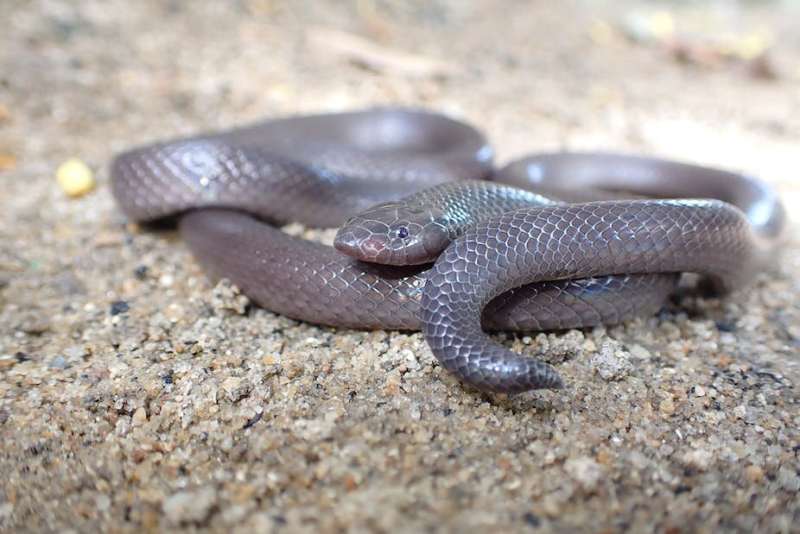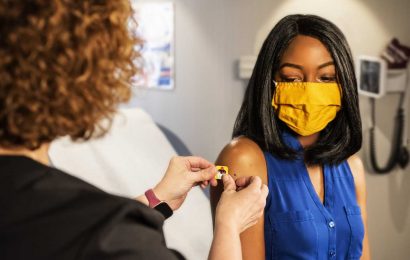
Every year between 20,000 and 32,000 people in sub-Saharan Africa die after being bitten by snakes. That’s more than five times the number of deaths caused by hippos, crocodiles, elephants, lions and buffalo combined.
At least, that’s what the available data suggests. But, the World Health Organization (WHO) acknowledges, that statistics—as well as figures related to non-fatal injury and disability caused by snakebites—are incomplete. Not all snakebite victims are treated in hospitals, especially in poorer countries and communities. Some may be treated by traditional doctors. Others may die before receiving any treatment.
But without accurate data, it is difficult to see how the WHO will meet its global target of reducing death and disability from snakebites by 50% by 2030. Without it, it’s difficult to prioritize which countries or regions require financial resources or antivenom, for instance.
We wanted to find a different way to quantify snakebites. So my colleagues and I from Mozambique’s Lúrio University embarked on a household survey across nine rural villages in Cabo Delgado Northern Mozambique. Before this, the only existing snakebite data for Mozambique was extrapolated from incidents in other countries in sub-Saharan Africa. This suggested there were 6996 snakebite cases and 319 deaths annually in Mozambique.
Our results offer a very different and extremely worrying picture. From our data we extrapolated snakebite figures for the entire area and for Mozambique as a whole. Despite being an underestimation (since we favored a conservative approach) they increase snakebite incidence levels ten-fold and the number of deaths by 30-fold.
Urgent and widespread surveys are needed to further assess the full extent of snakebites in sub-Saharan Africa, explore regional patterns and develop mitigation plans. Obtaining this sort of data is critical: the WHO has placed snakebite in category A (the most severe or urgent) of neglected tropical diseases. Its 2030 target underscores that this is a priority area. But how can this metric be checked without accurate data?
Gathering data
We gathered data from 1,037 households. We asked about snakebite incidents in people’s own homes and among their neighbors, as well as details about the species of snake, the symptoms, and what sort of treatment the victim received, if any.
There were 296 reported snakebites and most (60%) were treated exclusively by traditional doctors; 15% went to hospitals for treatment and 25% died before reaching any doctor.
Using a conservative estimation where we assume our results to be extrapolatable for the whole of rural Mozambique, but considering snakebites in urban areas to be inexistent, we propose that every year in Cabo Delgado, at least 6,124 people are victims of snakebites. Of these at least 791 result in deaths.
In Mozambique, we extrapolated that every year at least 69,261 people are victims of snakebite; at least 8,950 result in death, meaning that one in eight snakebites is fatal. For comparison, 37,000 people die in Mozambique (which is home to more than 30 million people) each year because of respiratory infections and tuberculosis while 21,000 die from malaria.
Most (68%) of the population live in rural areas and practice subsistence farming for a living. This means that millions of people are exposed to snakebites. The country is home to at least 14 snake species of medical importance—those whose bites can kill or lead to limb amputation. This is a fairly standard number of such snakes for the continent’s less tropical regions.
The number of medically important snakes in the country, the percentage of people living in rural areas, and the total absence of snakebite incidence data, make Mozambique a good place to focus on when trying to quantify and model snakebite data.
Who gets bitten and where
Some of our other key findings included:
- Most bites occurred on farms and during the rainy season (December to April).
- The type of snake was important when people were choosing between hospitals or traditional doctors. Those bitten by dangerous species such as the Puff Adder were usually taken to hospitals. Bites from less dangerous species like the Stiletto Snake were taken to traditional doctors.
One exception was made for victims of Black Mambas. This deadly snake has extremely fast-acting venom: its bite can kill in less than an hour. In the communities we surveyed, Black Mamba victims were usually taken to traditional doctors close to home, to avoid long trips to hospitals up to 20km away and queues at the facilities.
Figures may be higher
It is possible that our figures are too low. That’s because we took a conservative approach when extrapolating data—and because we assumed that every interviewee had 100% recall, as well as assuming a 0% snakebite incidence in urban areas, which make up 30% of the country.
So, the figures for snakebite incidence are very likely still an underestimation of the true incidence in both Cabo Delgado and Mozambique more broadly.
Local universities should consider using our approach to engage with communities and retrieve household data. This will help researchers and health authorities to assess the full extent of snakebites in sub-Saharan Africa, explore regional patterns and develop mitigation plans.
Source: Read Full Article


